By Mark Penn, Chairman and CEO, Stagwell
and Josh Beatty, Founder and CEO, ARound
CONTACT
Mark Penn
mark.penn@stagwellglobal.com
FEATURING
Marketing Frontiers is a new series from Stagwell exploring the methods, mediums, and messes modern marketers will grapple with over the next decade as they chart transformation in the discipline. This January, Stagwell is exploring the new frontiers of Augmented Reality.
Event-based AR can help marketers attract audiences at scale for new forms of shared, blended, and branded experiences.
We tend to envision AR as a means of distraction but there is transformative power in combining the physical and the augmented for highly immersive, interactive experiences.
AR at live sporting events can help create persistent, relevant, and shared experiences that will engage casual fans while enhancing the experience for sports fanatics.
Augmented reality has transformed from a bespectacled fad to an emergent marketing frontier for modern brands in recent years. Still, there is still much work to be done to create AR audiences at scale, attracting the masses.
Why is it hard to scale AR? Because – to date – AR has focused on the individual. We believe that the transformational power of AR is in creating experiences that bring people together around a common place and purpose. Purely functional applications like seeing how a piece of furniture might fit into your home are useful but do little to attract the mass consumer audience AR needs to go mainstream.
What if instead we focus our AR experimentation on augmenting shared experiences like sporting events, in stadiums with captive audiences that are naturally some of the most enthusiastic consumer bases in the world? As sports leagues adapted to the pandemic, marketers learned consumers hunger for more dynamic engagement with their favorite teams and players. They want to get closer to the action, closer to the players, and bond with one another over experiences they’ll remember for a lifetime.
Let’s use AR to get there. We believe sports brands have a strong opportunity to power more immersive and meaningful experiences with the next frontier of augmented reality: event-based AR.
The promise of event-based AR is to bring content to context, providing for more immersive and meaningful experiences connected to the events and people around us. AR can fuel moments of catharsis for the consumer, creating powerful emotional connections to brands, stadiums, and other key fan and player locations.
We already know sports fandom is a lifelong affiliation. Augmented reality can help brands extend that fever into a new dimension, offering interaction, socialization and new forms of connection
ARound helps venues and retailers create augmented reality experiences for live events, bringing audiences together at scale where they can play, interact, and socialize in completely new and exciting ways.
‘Mario Party But With 30,000 People’
Sports marketers can use augmented reality to power stronger consumer experiences with fun, relevant, and shared brand moments.
The transformational power of AR is in creating experiences that bring people together around a common place and purpose.
Building Fun Moments
Every Thanksgiving, one relative is bound to recount an infamous fly-ball he caught from the seats at a baseball game growing up. And even the least sports-engaged Bostonian becomes a model hometown fan when the Patriots are due for more Super Bowl wizardry. Sports marketers know best that the memories fans make at sporting events are some of the most persistent experiences they’ll have in their lives.
So why not use AR to bring more of those experiences to a wider swath of fans?

Everyone might not be able to carry a flyball away with them as a lifelong souvenir, but every fan can experience moments that will turn into memories. With AR, fans in seats with lackluster angles can be brought into the action while players personalities can become larger than life, creating memorable moments that will dominate social media. Adding more experiential touchpoints via AR can make a standard Sunday game fodder for “remember when!” stories for years to come.
Serving Relevant Content
Using AR to add context to content can help brands further engage consumers on location, arming them with an agile new tool for building the compelling experiences that drive value. With event-based AR integrations, brands can adapt flexible content based on everything from proximity to the main stage to the affiliations of fans. Advertising in-game can be tailored, too, to reflect first-party inputs like a consumer’s favorite sports team, hometown, and more. Ultimately, the tech will serve as a powerful way to recapture and convert attention otherwise lost to consumers’ mobile browsing habits during live events.
Keeping fans engaged before, during, and after the game with personalized content enables a myriad of brand integrations. With just baseline first-party data input by users about team fandom, hometown, favorite players and preferences for merchandise, a whole universe of addressable AR content opens up, activated through their mobile devices.
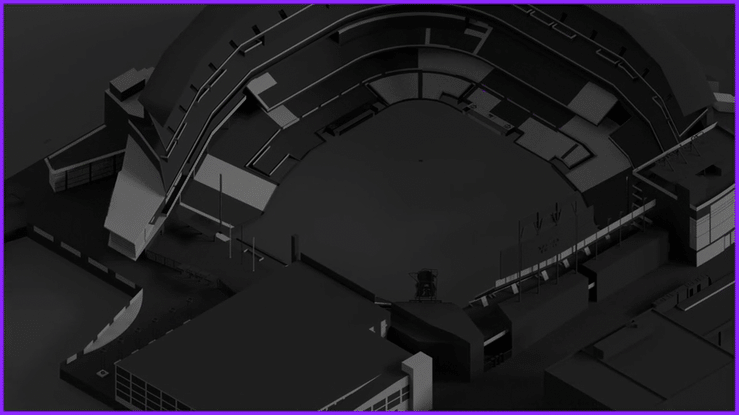
Creating Shared Social Experiences
Let’s be honest: while fans may be physically captive, of a sort, at in-person sporting events, it’s another game to capture and keep their attention. At the same time, sports is inherently social – something that positions it well to beat the AR trap of failing to scale by being mired in individual experiences. Leveraging AR to extend shared moments through every part of the game will help build closer connections between teams, players, and their fans, bringing talent on the field to life in multi-sensory, bigger-than-life arenas.
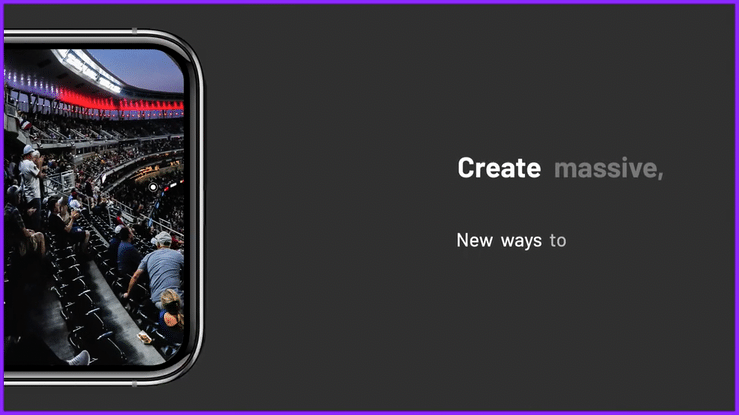
Layering gamified content, player stats and optional replays in AR during games can keep fans focused on and interacting with the field. Brands might stoke team rivalries with interactive competitions during games, with fans’ actions contributing to an aggregate team score. At the end of a game, fans from the winning team might get virtual collectibles or NFTs that build up to larger prizes with more and more engagement at AR-enabled locations, ultimately winning season passes or exclusive IRL merchandise. During intermissions, fans could open their phones to participate in competitions like tug of war fueled by the in-app engagement of 30,000 people, with rival team mascots scaled as AR avatars on the field. You can even imagine beloved mascots like The Phillie Phanatic or Mr. Met swarming the field with AR-doubles for intermission shows that extend beyond the physical to engage fans throughout the entire stadium, not just close to the field.
While our focus is ostensibly on AR moments connected to physical locations and powered by mobile, it’s not hard to see how marketers can activate AR-integrated apps or hardware to plug at-home fans into live sports.
Related
Articles
Events, In the News, Investments & Financials, Press Releases
Aug 07, 2025
Stagwell (STGW) Announces August Investor Conference Schedule

In the News, Press Releases
Jul 14, 2025
JULY HARVARD CAPS / HARRIS POLL: OPINIONS ON “BIG BEAUTIFUL BILL” SPLIT WITH 44% OF VOTERS SUPPORTING IT, BUT MOST POLICIES HAVE MAJORITY SUPPORT WITH MANY POPULAR TAX CUTS
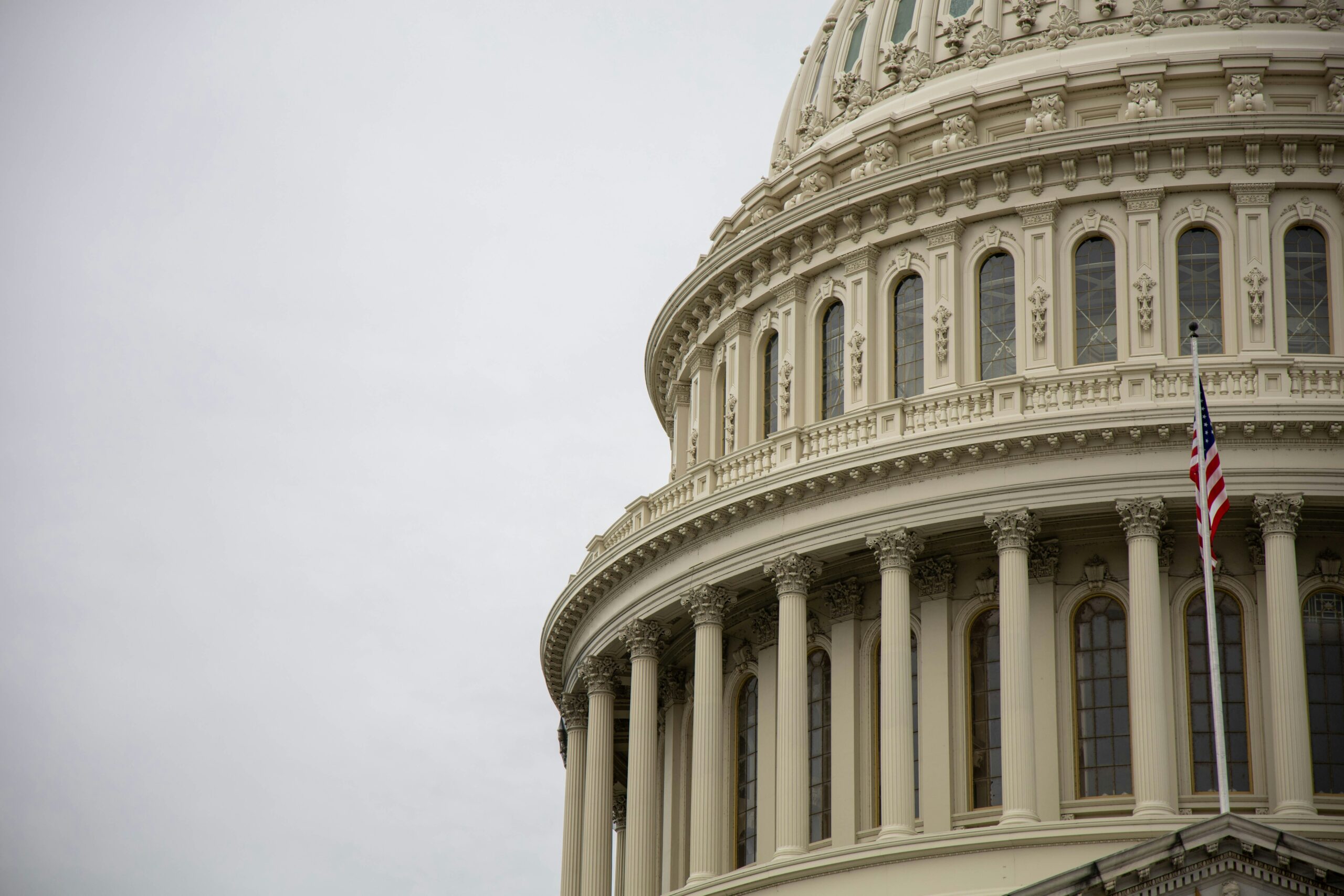
In the News, Press Releases
Jul 09, 2025
STAGWELL LAUNCHES STAGWELL MEDIA PLATFORM (SMP), A CENTRALIZED TEAM OF GLOBAL MEDIA, TECHNOLOGY AND DATA INVESTMENT EXPERTS

Newsletter
Sign Up
This week marked the National Retail Federation’s 2022 conference, the premiere summit of the world’s largest retailers. Stagwell was listening in, as well as talking with lead retail experts and practitioners from brands like Johnson & Johnson, AERIN, Bayer, Snap, and more.
So what do marketers need to know? We recap the top five trends and takeaways to emerge from the week below.
If you’d like to learn more, email Beth Sidhu. Interested in more retail insights? Click here for our retail report card and please sign up for more insights here.
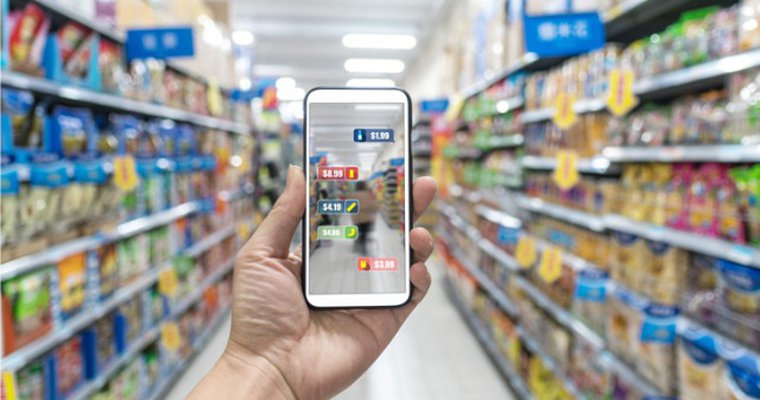
1. Blended Retail Experience is Here to Stay
The pandemic accelerated a new template for the shopper journey that sees consumers move frequently across brick-and-mortar and digital touchpoints. Consumers want to shop, browse, and discover on their own terms, using the full range of devices, delivery mechanisms, and in-store ecosystems available to them. Expect retail to continue to trend towards convenience – defined on the consumer’s terms – that is supported by digital layers that add function, streamline experiences, or collapse multiple aspects of the purchasing funnel. Marketers need to invest in seamless handoffs between touchpoints urgently.
2. Safety Will Keep Driving In-Store Shopping Behavior
With variants extending the pandemic for who-knows-how long, health and safety will continue to be top of mind for consumers. Telegraphing your brand’s investment into COVID-19 protocols without veering into the realm of pandemic theater/fearmongering is one way brands can remain in favor with today’s consumers. Marketers should ensure their messaging around safety connects with reality for employees, as the employee-as-brand-ambassador trend popularized by big box retailers like Walmart continues.
3. If Your Commerce Isn’t Connected, What Are You Doing?
Enduring supply chain disruptions will put additional pressure on retail shops to adapt technology and digital tools to further connect their enterprises. To keep apace with customer expectations for faster delivery and order fulfilment, brands need to adapt sophisticated inventory tracking and real-time retail dashboards, as well as look to further synchronize marketing and sales activities.
4. Social Commerce Gets a Lift From Live Streaming
Live commerce – a staple abroad but gaining traction across the U.S. – will mainstream in 2022 as brands need to bridge consumers’ platform and content experiences with their shopping habits. The models abound, from the 24-hour shopping livestreams that drive billions in sales during China’s major retail holiday, Double 11, to more curated influencer streams that tap into micro and nano influencers to tell the stories behind products in more authentic ways. This engagement renaissance will be powered by integrated payment portals, QR codes picture-in-picture digital displays, and other technology enabling a seamless step-through discovery to purchase.
5. Retail Cautiously Experiments with the “M” Word
In the absence of the technology infrastructure to support the much-buzzed about Metaverse, retailers are experimenting with what’s available now – mixed reality tools — to power exciting new experiences that tie the physical world to the digital world. Live events and retail supported by augmented reality can power more engaging shared experiences for consumers, while virtual tokens, avatar outfits, and other digital tokens can extend a brand’s product suite into this burgeoning new dimension of the web.
Related
Articles
In the News, Press Releases
Jul 09, 2025
STAGWELL LAUNCHES STAGWELL MEDIA PLATFORM (SMP), A CENTRALIZED TEAM OF GLOBAL MEDIA, TECHNOLOGY AND DATA INVESTMENT EXPERTS

Artificial Intelligence, In the News, Marketing Frontiers, Press Releases, Stagwell Marketing Cloud, Tech
Jun 12, 2025
PRophet, a Stagwell (STGW) Company, Completes Integration of UNICEPTA, Launches Unified Brand and Enhanced Media Intelligence Offering

In the News, Marketing Frontiers, Press Releases, Stagwell Marketing Cloud, Tech
Jun 11, 2025
The Marketing Cloud Launches Cutting-Edge Platform to Simplify Marketing Workflows
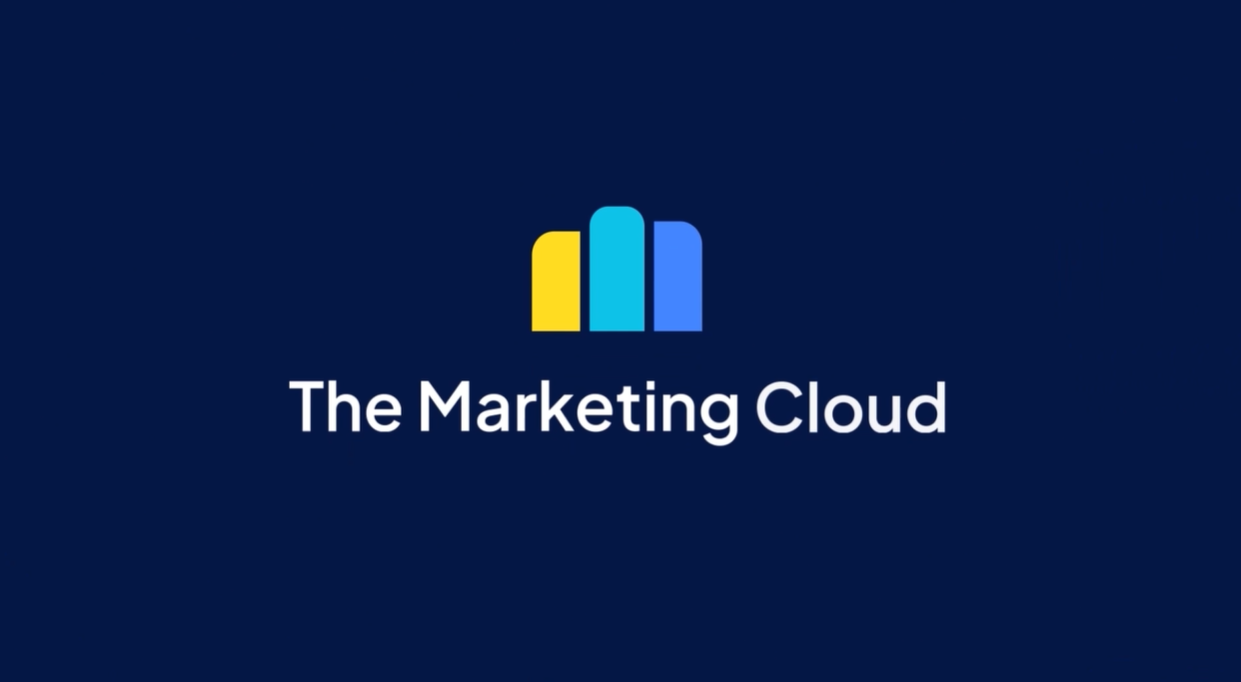
Newsletter
Sign Up
FEATURING
As we reflect on the marketing implications of CES 2022, Web 3.0 is by far the most impactful development that showed up across industries, technologies and capabilities. While in some ways it may be another victim of CES’ shiny veneer versus reality, there are components that are impossible to ignore – namely, the influx of and investment in the metaverse and NFTs.
Stagwell is one of the first movers when it comes to helping brands activate in this nacent space, having supported the launch of MilkPeP’s activation in the Roblox metaverse. On Thursday, January 6, Stagwell convened a lunch and learn, moderated by Axios’ Sara Fischer, to discuss the tactical and theoretical challenges and opportinities presented by Web 3.0. Here are our top 5 takeaways from the conversation:
- COVID WAS A CATALYST, bringing the metaverse into the real world
- BRANDS WILL PLAY A KEY ROLE IN BUILDING TRUST with these technologies and platforms
- NOT EVERY BRAND SHOULD BE IN THE METAVERSE, and not every metaverse is created equal
- METAVERSE + IRL should be a seamless experience
- NFTS are here to stay
Web 3.0 is a nuanced topic, and one that is the opposite of a one-size-fits-all approach. Depending on brand, product, buyer demographic and existing marketing activity, the metaverse and NFTs can fill a very important role (which may be… no role at all. More on that later). Learn more about what it means for brands, creative and the future of the online/offline world.
Praesent rutrum gravida consectetur. Cras vitae pretium urna. Phasellus aliquet, lacus dictum consequat tempor.
1. COVID was a catalyst, bringing the metaverse into the real world
The metaverse would have come eventually (in fact it’s already been here…hello, gaming community!), but the pandemic undoubtedly accelerated the timeline. With the majority of the world going digital, tech companies were pushed to develop products, tools and software that allowed us to do so much more from a virtual setting, exposing a more urgent demand for expanded virtual experiences and capabilities from brands.
the role of brands, as it has always been, is to create culture and pioneer what could be coming and help people imagine the art of the possible. They create links for consumers and act as educators for navigating the new space.
2. Brands will play a key role in building trust with these technologies and platforms
|
There’s a significant opportunity to live your brand values in the metaverse. If done well, brands will ensure their presence is connected and consistent with the way they show up in the real world, ultimately leading to greater consumer loyalty and retention. |
3. Not every brand should be in the metaverse, and not every metaverse is created equal
|
Direct-to-consumer relationships are more important than ever as we move into a cookieless world, so there are real business reasons that support having a presence in the metaverse. But it comes down to understanding your brand’s role, identifying your objectives, and how entering this space would aid in achieving those, and finally, implementing a process for facilitating, tracking, and measuring success. |
4. Metaverse + IRL should be a seamless experience
|
Let’s face it, some consumers are nearing a point of digital saturation. So, it’s important to note that the metaverse is not meant to be all-consuming. People value in-person experiences – there will be points in time that make sense to utilize the metaverse in addition to other consumer touchpoints, while there will be moments where we can come together in the real world and physically be a part of something. Blending the two seamlessly: now that’s a real win. |
5. NFTs are here to stay
|
As these advancements become more democratized in their accessibility, brands will start to use them more, whether it’s for loyalty, or to reignite an old concept or product. Industries will adopt NFTs as a creative means to build community and connect with people who support and protect their brands. |
Originally released on
CONTACT
Lorem Ipsum
FEATURING
Related
Articles
Events, In the News, Investments & Financials, Press Releases
Aug 07, 2025
Stagwell (STGW) Announces August Investor Conference Schedule

In the News, Press Releases
Jul 14, 2025
JULY HARVARD CAPS / HARRIS POLL: OPINIONS ON “BIG BEAUTIFUL BILL” SPLIT WITH 44% OF VOTERS SUPPORTING IT, BUT MOST POLICIES HAVE MAJORITY SUPPORT WITH MANY POPULAR TAX CUTS

In the News, Press Releases
Jul 09, 2025
STAGWELL LAUNCHES STAGWELL MEDIA PLATFORM (SMP), A CENTRALIZED TEAM OF GLOBAL MEDIA, TECHNOLOGY AND DATA INVESTMENT EXPERTS

Newsletter
Sign Up
CES 2022 is in the rearview mirror. The technologies that debuted this year will bring accelerated innovation and transform the way consumers get and share information, engage with brands, and experience culture for years to come.
This year, Stagwell hosted a series of virtual floor tours featuring expert commentary on the trends we expect will transform marketing in 2022 and the implications for marketers. Below, we share our top four takeaways:
More Screens, in More Places, More Often (Doing Different Things):
- The trend: Television is evolving from a purely entertainment-focused device to a multi-faceted video display, enabling a sprawling universe of entertainment, lifestyle, home décor, news & information, and communication possibilities supported by the assistance of your favorite AI and voice-enabled tech.
- The implications: More screens, in more places, more often means more media placement channels for brands, greatly expanding the array of consumer distribution touchpoints available. The way content is displayed isn’t the only thing changing; the nature of content itself will adapt to streaming-era behaviors that can more seamlessly connect content to commerce-driving actions via things like QR codes. Perhaps unexpectedly, the TV console in 2022 may find new life as a portal for discovery, addressable content marketing, and a rich source of first-party data.
The Creator Economy is Here – For Everyone:
- The trend: Tools for video creators continue to evolve, giving both the quality and bells and whistles of strong video content that were once reserved for professionals. At the same time, brands are experimenting with ways to give consumers creative control over branded products and services, seen in products like the L’Oreal Colorsonic which allows consumers to make their own custom lipstick.
- The implications: 2022 will be the year technology and brands converge to empower everyone to be a creator of products, not just content. For brands with an imperative to scale compelling across increasingly niche consumer segments, marketing activations that empower the average consumers to use brand assets, products, or other associated content will be a powerful tool for awareness and top-of-funnel marketing.
Problem-Solving Tech:
- The trend: Technology is shifting to focus on the key economic and social challenges that were illuminated by the pandemic, such as food sustainability and labor and supply chain shortages. We saw a heavy emphasis on artificial intelligence and robotics as a tool for tackling these complex challenges of human scale, exemplified in products like John Deere’s fully autonomous tractor or the tradeshow-wide trend towards Electric Vehicles.
- The implications: Brands will have new opportunities to scale the best practices enabled by problem-solving tech, which can unlock exciting new business models, product offerings, and service capabilities. At the same time, renewed corporate interest in the environmental and social footprints of businesses will add pressure for CMOs to ensure marketing communications and operations address their businesses’ impact.
Scaling In-House Marketing:
- The trend: The tech on display in the C Space for marketers underscores the need for a toolbox of scalable, DIY-marketing tools for in-house teams, who are increasingly present at major brands. At CES this year, Stagwell showcased the Stagwell Marketing Cloud, our suite of solutions supporting business transformation for in-house marketers, arrayed across real-time business intelligence, AI-powered comms tech, AR for events, and end-to-end influencer marketing management.
- The implications: With over 77% of organizations now having some form of in-house agency, expect investment in tools & services to support in-house marketing creation and execution to continue. Specifically, brands will be on the hunt for solutions that enable them to unify first-party data, create content at scale, and drive efficiency through their operations via automation.
—
To dive deeper into the technology on display at CES 2022, stream a recording of Stagwell’s Virtual Floor Tours here, and reach out to beth.sidhu@stagwellglobal.com if you have questions.
Related
Articles
Events, In the News, Investments & Financials, Press Releases
Aug 07, 2025
Stagwell (STGW) Announces August Investor Conference Schedule

In the News, Press Releases
Jul 14, 2025
JULY HARVARD CAPS / HARRIS POLL: OPINIONS ON “BIG BEAUTIFUL BILL” SPLIT WITH 44% OF VOTERS SUPPORTING IT, BUT MOST POLICIES HAVE MAJORITY SUPPORT WITH MANY POPULAR TAX CUTS

In the News, Press Releases
Jul 09, 2025
STAGWELL LAUNCHES STAGWELL MEDIA PLATFORM (SMP), A CENTRALIZED TEAM OF GLOBAL MEDIA, TECHNOLOGY AND DATA INVESTMENT EXPERTS

Newsletter
Sign Up
Originally released on
CONTACT
Mark Penn
FEATURING
It’s 2022 and there are still no driverless cars. Don’t be discouraged — the hype was always greater than what technology could master. As you bring new products to market, consider this: what is the right “digital” layer to your customer experience and marketing? Some companies overshoot when answering this, envisioning beyond the current limitations of technology. Others fall short and lack a vision for how to refine their digital layers for transformation.
As former Chief Strategy Officer for Microsoft and now CEO of Stagwell, I have sifted through thousands of digital layer ideas. I once proposed opening an online bank only to be told those transactions were commodities. Just try to get into fintech now, one of the hottest areas of emerging tech innovation.
Physical money, physical meetings, and yes even physicals at the doctor’s office are being replaced with direct digital experiences that take simple technologies and combine them with great logistical operations to generate winning digital layers. Look at what has happened in the last few years to ordering groceries. Grocery services adapted the physical shopping experience into an intuitive digital process of food and recipe selection that powers enviable conversion.
To pioneer digital transformation at your brand, you don’t need to engineer the next iPhone. But you must understand and master the potential new digital layers of your product or service to find ways to enhance them. Put simply, the trick to building a successful digital layer is strategically adapting a physical process into a digital one to add convenience and value to the user journey.
Hailing a cab is an everyday physical process that has been transformed into a digital exercise. Before, consumers braved an awkward street-side system that used to generate its fair number of street brawls. Uber saw the unlimited potential in bringing the act of cab hailing and driver management into the digital layer. It wasn’t a breakthrough of engineering so much as a breakthrough in adding the benefits of already-developed technologies to the service experience.
Sometimes people overshoot their potential digital layer and invest in expensive digital layers that only add confusion for consumers. Movie theaters, for example, learned the hard way that the impressive customization options available on those complex, multi-brand touch-screen soda machines only goes so far. Lemon lime cherry diet cola, anyone? No – your consumer wants a Coke.
Real estate maps that let people sort nearby options and view video tours are an extremely helpful tool for people navigating the rental and relocation process, but most people are still going to need to see a tour of the apartment to close the sale. The digital layer in real estate enhances the discovery process but doesn’t replace the entire user journey. This is an important limitation: while most things can be made digital, not everything can be replaced by a digital layer.
And if the product itself lacks a digital layer, the marketing around it is where to look for your layer. How can digital help you better display product, provide information, and make the shopper experience convenient and enjoyable? Brands like Amazon build relatively straight-forward digital marketing templates for UX, so there are still many possibilities remaining for making product presentation more engaging with 3D and AR layers.
Entering 2022, now is the time to break down every step of your current product and marketing process and ask – is this better accomplished in the real world or in the metaverse? Then you can more easily identify the outer bounds of your potential digital layer.
Imagine big, then implement layer by layer. Some ideas will be duds and some will be game changers. Most of what we are able to do with digital has in theory already been invented in the last decade, but much of what we can do in practice with this technology has yet to be accomplished. Finding the right digital layer for your product or service is at the core of how you can you transform your business in today’s digital economy.
Related
Articles
Events, In the News, Investments & Financials, Press Releases
Aug 07, 2025
Stagwell (STGW) Announces August Investor Conference Schedule


In the News
Jul 31, 2025
STAGWELL INC. (NASDAQ: STGW) REPORTS RESULTS FOR THE THREE AND SIX MONTHS ENDED JUNE 30, 2025

Newsletter
Sign Up
CONTACT
Beth Sidhu
FEATURING
Stagwell Chief Brand and Communications Officer Beth Sidhu visits the Stagwell Marketing Cloud at CES 2022 and highlights key priorities for tech investment for in-house marketers.
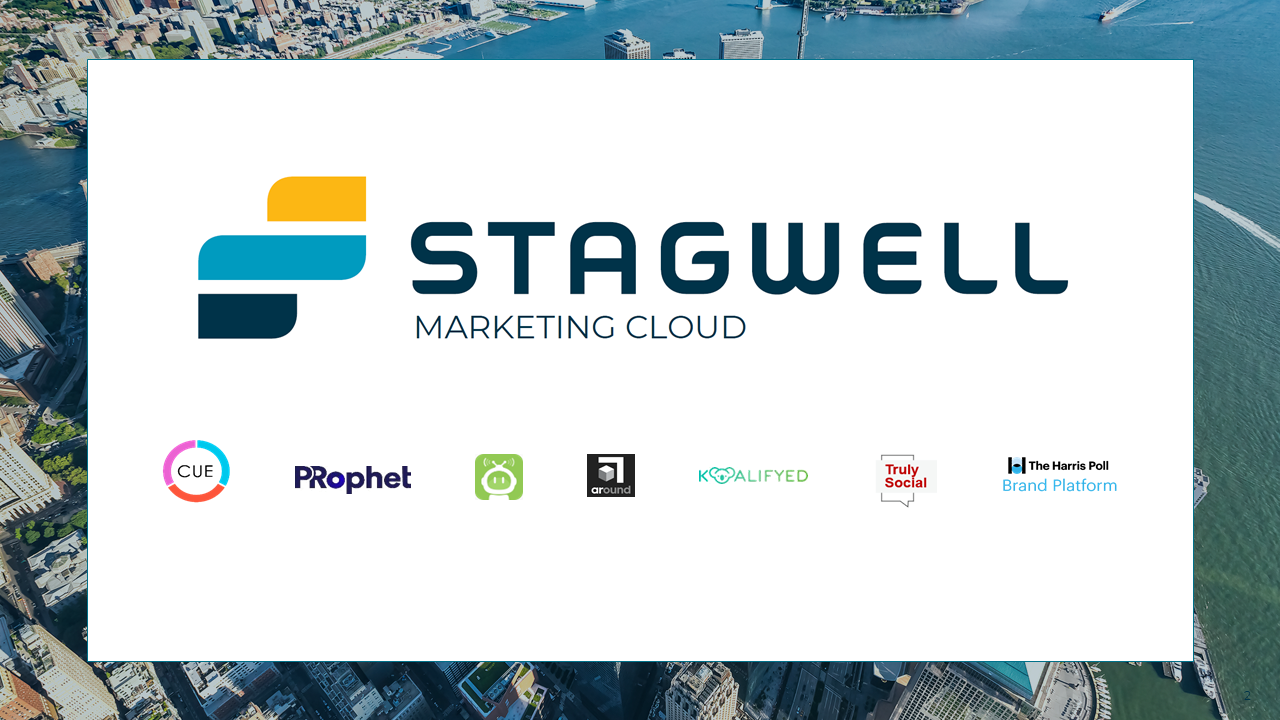
There’s a reason the marketing calendar begins each year with CES: there is no better place to track the technologies that will transform the way consumers get and share information, engage with brands and experience culture. Stagwell is on the ground in Las Vegas and virtually at CES this week sharing ARound, a location-based AR platform, which is the latest addition to our suite of tools for in-house marketers: the Stagwell Marketing Cloud.
Why build an in-house marketing cloud? CMOs need a trusted toolbox of solutions to help support business transformation as, per Forrester, 77 percent of global organizations now have some form of in-house agency. We’ve built the Stagwell Marketing Cloud to support in-house teams in four ways:
Powering real-time business intelligence
Empower and manage secondary brand ambassadors
Supercharging communications with predictive AI
Forge new mediums to connect with consumers
Powering Real-Time Business Intelligence
Real-time business intelligence tools like the Harris Brand Platform can provide in-house teams with daily insights on brand perception, equity, sales funnels and the impact of marketing campaigns on consumer behavior and perceptions. In an era where errant tweets and unfortunate headlines can cause your brand’s stock to soar or sink, there are few better ways to fireproof your operations than regular pulses of brand perception.
Supercharging communications with predictive A.I.
Marketing communications evolve but the mission remains the same: get the right message to the right person at the right time. When harnessed strategically, earned media can help a team offset (or if they’re lucky, supplant) the need for a hefty paid investment.
PRophet is a tool that enables in-house marketers and PR professionals to predict media interest, sentiment and spread of a press story prior to pitching. The product is powered by the latest developments in artificial intelligence and machine learning and bolstered by expanding partner databases such as with Podchaser to give teams the predictive intelligence they need to tie amplify their great creative ideas with earned media coverage. As A.I. gets more sophisticated, tools like PRophet can free-up PR pros to focus their creativity on brand-building efforts and growing brand mandates like ESG, DEI, and engaging new stakeholders.
Empowering Brand-Safe Ambassadors.
In a platform dominated society, influence is currency. With the rise of social commerce, live streaming, and yes even the metaverse, it’s more important than ever for brands to have strategies for authentically activating influencers that dominate their respective categories. At the same time, marketers need assurances that the influencers they partner with are brand-safe and services rendered are compliant with agreed-upon contracts.
Koalifyed is an end-to-end influencer marketing application that brings helps brands manage complex influencer programs. Underpinned by a bot-detection solution, SNIFF (which stands for social network influencer friend or foe), Koalifyed is a great tool for in-house marketers handling complex influencer campaigns.
Pushing the New Frontiers of the Consumer Experience
Without a doubt, 2022 will bring all the tools of mixed reality and the metaverse into marketing efforts. Just as brands are looking into the virtual world, consumers will be clamoring to return to the physical world, pending the control of the Omicron variant. In-house shops can use location-based AR as an easy, cost-effective investment into developing more engaging digital layers to live events.
ARound is an augmented reality creation tool for live events that empowers brand to bring audiences together at scale so they can engage, interact, and socialize in a completely new and meaningful way. By giving partners the tech and a content interface to experiment with the medium, ARound empowers in-house teams to invest now in the budding metaverse to enhance the journey for consumers.
Where to From Here?
In-house marketers need the best tools available and we’re excited to that support in-house marketing transformation for modern businesses. See ARound, our AR product, on the floor this week at CES, peruse our digital CES booth featuring more products from the Stagwell Marketing Cloud, and reach out to hello@stagwellglobal.com.
Related
Articles
Events, In the News, Investments & Financials, Press Releases
Aug 07, 2025
Stagwell (STGW) Announces August Investor Conference Schedule

In the News, Press Releases
Jul 14, 2025
JULY HARVARD CAPS / HARRIS POLL: OPINIONS ON “BIG BEAUTIFUL BILL” SPLIT WITH 44% OF VOTERS SUPPORTING IT, BUT MOST POLICIES HAVE MAJORITY SUPPORT WITH MANY POPULAR TAX CUTS

In the News, Press Releases
Jul 09, 2025
STAGWELL LAUNCHES STAGWELL MEDIA PLATFORM (SMP), A CENTRALIZED TEAM OF GLOBAL MEDIA, TECHNOLOGY AND DATA INVESTMENT EXPERTS





